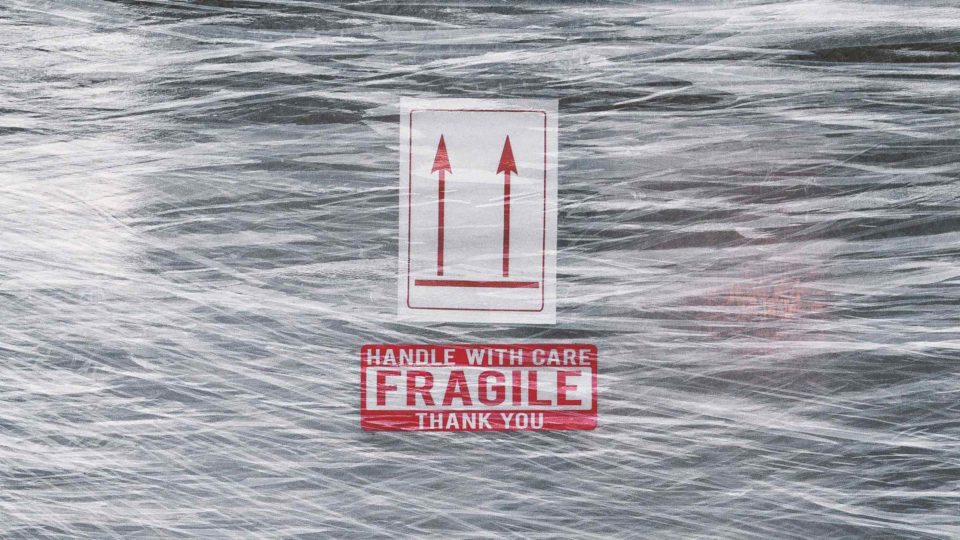Posted On July 6, 2020
Bad weather, bumpy travel and rough handling—there’s a lot that can go wrong when transporting cargo. Enter cargo insurance, which covers the costs of damaged goods and any additional shipping fees, like temperature control. But insurance isn’t always necessary. So we’re sharing the low-down on when you need to purchase freight insurance, what options are available and tips for when you need to file a claim.
So, how do you know when to buy cargo insurance?
Flat World doesn’t usually encourage our clients to purchase additional coverage unless we identify a need. Usually, the need is based on one of three Ps: price, patterns and product.
Price
Transportation carriers include some liability in the cost of shipping, meaning that if items are damaged, the carrier will reimburse up to a certain amount. The amount of coverage depends on the commodity class of what’s being shipped.
So when companies are debating whether to buy additional coverage, price is often the most important factor. If a shipment is worth $50,000 but the carrier-provided liability would only cover $2,000 in the event of damage, buying insurance is probably a good idea. But if the liability coverage is equal to or more than the cost of the goods, there’s no need to buy additional coverage.
Patterns
Another thing to consider is shipping history and any patterns of damage. Most companies don’t need to purchase additional insurance for their shipments unless there’s a pattern of damage or shipping issues.
The Flat World team looks for trends in the supply chain data to identify any patterns of shipment damage. Clients with consistent or frequent damage—especially when using the same carrier or shipping method—might want to consider buying insurance.
Product
The last thing to keep in mind is what product is being shipped. Sturdy, well-packaged, stackable products can usually ship fine without insurance. But objects that are awkwardly shaped, difficult to move or extremely fragile can benefit from extra coverage beyond carrier-provided liability.
You’ve got options.
Most people don’t realize that there are multiple options for buying additional insurance for their freight. Companies can choose to purchase insurance directly through the carrier, which typically costs about 1% of the shipment’s worth.
However, Flat World also offers insurance through a third-party partner, which is almost always a fraction of the cost of buying through a carrier. So if you decide you do need to purchase additional insurance, make sure to look into all the options first to make sure you’re getting the best deal.
But here’s the thing: sometimes cargo insurance isn’t the answer.
Cargo insurance is great for shipping expensive, fragile items that have a history of getting damaged. But it’s not the only option.
Instead, when we discover patterns of damage in our clients’ shipments, the issue is often the packaging. Changing the packaging to provide more padding or stability to the shipment can not only prevent damage but have other benefits as well. It also improves the customer experience and increases efficiency, because your team doesn’t have to waste time replacing and re-shipping damaged goods.
Finally, here’s what to do when your cargo gets damaged.
Even with the best packaging and care, freight can still get damaged. For those instances, here are a few tips from our claims team.
- Note any damage on the delivery receipt. When a delivery arrives, and you notice damage or missing parts—or even just rips in the shrink wrap—make sure to note it on the proof of delivery slip. If the receipt or slip is signed without any mention, that releases the carrier from any liability and makes filing a claim more difficult.
- Take photos. Don’t dispose of the damaged goods until you get plenty of photos showing the damage.
- File the claim right away. Carriers take 90-120 days to process claims when you’ve purchased additional coverage through them. Purchasing cargo insurance through Flat World typically takes 30 or less, but you’ll still want to file your claim immediately to get reimbursed as soon as possible.
If you have any questions about cargo insurance, contact us! We’d love to talk to you about your shipping needs and offer advice about additional insurance.

